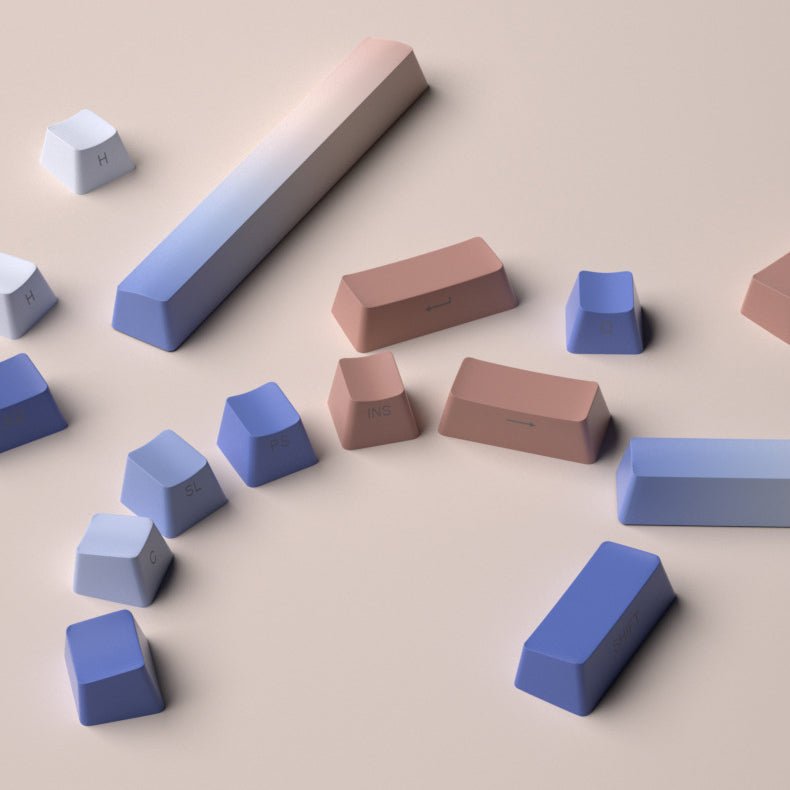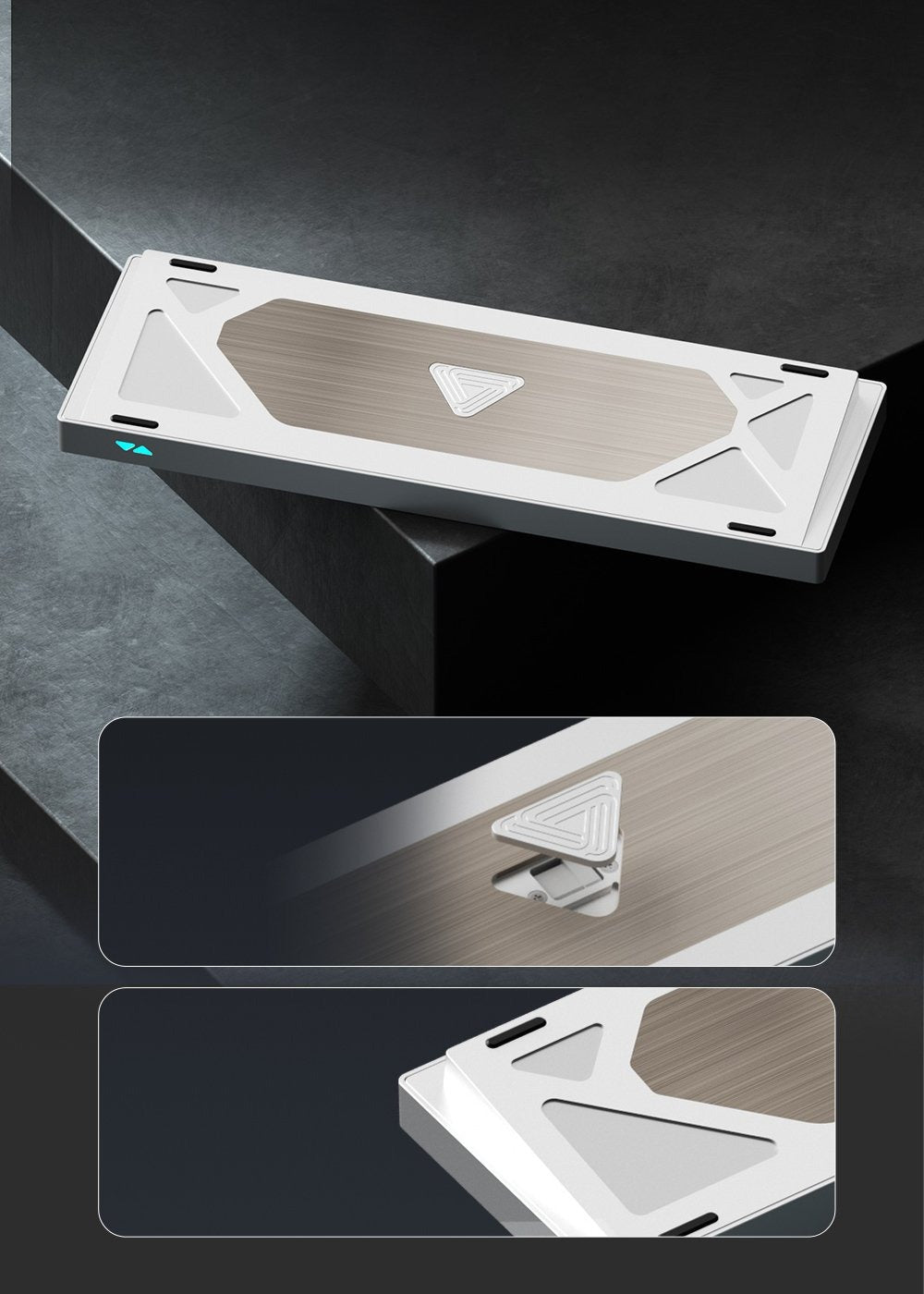When it comes to mechanical keyboards, there's a lot more to consider than just performance. The sound profile of your keyboard—how it sounds when you type—is one of the most personal aspects of the typing experience. For some, a satisfying, clicky noise is a must-have, while others prefer a quiet, nearly silent experience. One key factor that influences your keyboard’s sound is the keycaps you choose.
Keycaps come in a variety of materials, profiles, and constructions, each contributing to the overall sound profile of your keyboard. In this blog, we’ll explore how keycaps affect your keyboard’s sound, comparing the experiences of the “silent typists” and the “loud clackers,” and help you understand how to customize your setup to suit your preferences.
The Basics of Keycap Sound
Before diving into the specifics of how keycaps impact sound, it’s important to understand how sound is produced in a mechanical keyboard. The sound of each key press is generated primarily by the switches and keycaps, with the switches producing the fundamental sound and the keycaps acting as a resonator—amplifying and altering the sound produced by the switch.
There are three major factors that determine the sound profile of your keycaps:
- Material: Different materials can create a higher-pitched, sharper sound, or a deeper, more muffled tone.
- Thickness: Thicker keycaps generally produce a deeper, more muted sound, while thinner keycaps can create a sharper, more tinny noise.
- Profile: The shape and height of keycaps influence how they interact with the switches and affect how the sound travels.
Now, let’s break down how these factors contribute to the two main categories of keycap sounds: the silent typists and the loud clackers.
Silent Typists: The Quest for Quiet
For many people, especially those who work in shared spaces or game late at night, quiet key presses are essential. While a lot of the noise from a mechanical keyboard comes from the switch itself, the keycaps still play a role in reducing or amplifying that sound.
Keycap Materials for Quiet Typing
If you’re looking for a quieter typing experience, the material of your keycaps is crucial. Here are some materials known for helping to reduce noise:
- PBT (Polybutylene Terephthalate): PBT is a denser and thicker plastic than the more commonly used ABS. Its composition helps absorb and dampen sound, making it ideal for a quieter keyboard. It also feels more premium and tends to be more durable over time, keeping its quiet nature intact for longer.
- POM (Polyoxymethylene): POM is another material known for its sound-dampening qualities. It produces a smoother, less resonant sound compared to thinner or less dense materials like ABS. POM keycaps tend to produce a subtle “thock” rather than a sharp “clack.”
Keycap Thickness and Sound
Thicker keycaps are generally quieter because they absorb more sound and vibrations. Thicker keycaps, especially those made of PBT or POM, prevent the hollow, ringing sound that some keyboards produce with thinner ABS keycaps. This is especially noticeable in low-profile keycaps, which can make a noticeable difference in the overall volume level of your keyboard.
Profile Matters: Shorter, Sculpted Profiles
Keycap profiles also affect sound. A shorter keycap will typically produce less sound because the key has less distance to travel before it hits the bottom of the switch, minimizing the impact sound. Sculpted profiles, such as Cherry or DSA, with their gradual incline, can provide a softer sound experience compared to flat profiles like DSA, which can be slightly louder due to their uniformity and minimal travel distance.
Loud Clackers: Embracing the Noise
On the other end of the spectrum, some people love the distinctive clacking sound that mechanical keyboards can make. Whether you’re a fan of satisfying keypresses or you just enjoy the feedback, louder keycaps can create an energetic, fun, and distinctive typing experience.
Keycap Materials for Loud Typing
The materials you choose for your keycaps play a huge role in the noise produced when typing. If you’re looking to embrace the loud, clicky sound of a mechanical keyboard, ABS is the go-to material. Here’s why:
- ABS (Acrylonitrile Butadiene Styrene): ABS keycaps are typically thinner and less dense compared to PBT or POM, which means they tend to amplify the sound of each keypress. When paired with clicky switches like Cherry MX Blues, ABS keycaps enhance the sharp “click” noise, creating a louder and more attention-grabbing sound profile.
Thinner Keycaps and Sound
If you love the louder clack of a mechanical keyboard, thinner keycaps will help you achieve that. The higher-pitched sound produced by thinner keycaps, especially ABS keycaps, gives your keyboard that satisfying “clack-clack-clack” noise that many enthusiasts adore.
Lighter and thinner keycaps produce more sound because they don’t absorb as much of the impact and tend to resonate more freely. This results in the keyboard sounding “more hollow” and louder with each press.
Profile and Sound Amplification
The profile of the keycap also plays a role in the sound produced. Taller keycap profiles, like SA or KAT, can amplify the sound because of their increased height, which leads to a longer drop and more resonance. These profiles are often favored by typists who want an exaggerated, louder noise, especially when paired with clicky switches.
Keycap Sound Summary: Silent vs. Loud
| Factor | Silent Typists | Loud Clackers |
|---|---|---|
| Material | PBT, POM | ABS, Polycarbonate |
| Thickness | Thicker keycaps (PBT or POM) | Thinner keycaps (ABS) |
| Profile | Shorter, sculpted profiles (Cherry, DSA) | Taller, more pronounced profiles (SA, KAT) |
| Overall Sound | Quiet “thock” or subtle sound | Loud “clack,” “click,” and high-pitched sounds |
Conclusion: Choosing Your Ideal Sound Profile
The keycaps you choose for your mechanical keyboard can dramatically change the sound profile and overall typing experience. If you’re someone who enjoys a quiet, subdued typing environment, consider keycaps made from PBT or POM materials, with thicker profiles and shorter heights. These will dampen sound and reduce the "clackiness" of your keyboard.
On the flip side, if you’re someone who loves the clicky, satisfying noise of a louder mechanical keyboard, ABS keycaps with thinner profiles like SA or KAT will produce the loud, distinct sound you desire. Taller profiles and lighter, more resonant keycaps will help amplify that satisfying typing noise.
Ultimately, the key to achieving the perfect sound profile for your keyboard is a balance of material, thickness, and profile. By experimenting with different keycap combinations, you can find the perfect fit for your unique typing or gaming experience. Whether you prefer the quiet hum of a silent typist or the energetic clack of a loud keyboard, the right keycaps can make all the difference.






